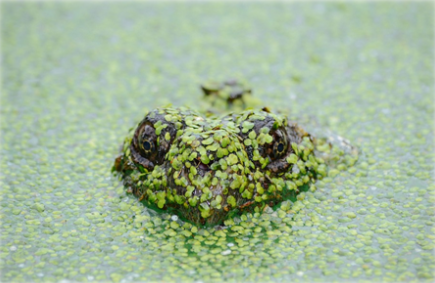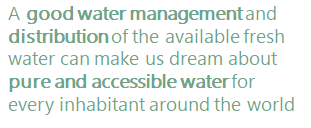One of the Sustainable Developments Goals (SDGs) included in the United Nations Agenda 2030 is ‘ensuring availability and sustainable management of water and sanitation for all’.

It has been estimated that 25% of global population will inhabit countries affected with a continuous shortage of fresh water by 2050. Consequently, facing the objective described in the SDGS is a real challenge and must be tackled by every member of society.
Water demand is relentless rising with a continuously growing global population and as a direct consequence waste and chemicals derived from water conditioning for human consumption are also an increasing threat. More than 80 % of waste water is currently being discharged to natural water flows without any treatment as an average value considering low and high-income countries. This uncontrolled drainage has a huge adverse impact on human health, economic productivity, fresh water natural resources and ecosystems, according to ‘The United Nations World Water Development Report’ from 2017.
Sustainable water management is an essential tool for achieving the water objective in SDGs and every affected agent must be fully compromised for getting free-contaminant water accessible for every human being. Waste water treatment and reuse is key to integral water cycle management and it has amazing benefits for society.
A viable and alternative option for low volume waste water treatment, for example for small and medium size municipalities, is the use of constructed wetlands, imitating natural systems in which water depuration comes from chemical, physical and biological processes occurring thanks to the interaction in soil-water ecosystems.
Constructed wetlands are designed and built so that plant growing in shallow ponds and channels allow a natural ecosystem establishment able to filter and transform contaminants in the water flowing across the wetland.

These alternative depuration systems are considered human made because they are designed and built according to different parameters. Natural depuration mechanisms are imitated but in this case the wetland is sealed in a waterproof manner in the interface soil-wetland so that no waste water is drained towards the natural soil before depuration occurs. Plants and soil substrate are selected according to the location and climate conditions. An important consideration for choosing the vegetable cover is that these plants should be able to tolerate and assimilate a high concentration of contaminants.
Wetland depuration system consists on water flowing across it during a fixed period of time. In the meantime, biochemical microorganisms’ activity acting together with plant oxygen supply and interaction and natural filtering by the substrate itself where everything is embedded allow water depuration with contaminant removal from the waste water.
Plant species grown in these green filters are usually emergent macrophytes, such as reed (Phragmites australis), rush (Scirpus lacustris), bulruchs (Typha spp), lilies, and also some floating plants, for instance duckweed plant (Lemna spp) or water hyacinth and in some cases submerged plants. While choosing species, climate adaptation and local conditions of the wetland location should be taken into account.

The importance of spreading the knowledge and fostering the installation of these wetlands lies in its low cost and energy saving when comparing to traditional depuration techniques. These advantages make of this solution a feasible alternative for small municipalities where waste water treatment is not being applied due to the lack of infrastructure investment. Furthermore, these systems have unquestionable environmental advantages such as the contributions to ecosystems preservation providing optimal conditions for wild species survival including the possibility of restoring habitats and species that were lost due to human activities.
CARTIF is currently participating in the project Poctep Aquamundam. This project has the aim of restoring and optimizing a constructed wetlands in Flores de Ávila (Castilla y León, Spain) among other goals. Water from the sewage treatment plant from this small municipality could be reused (for irrigation as an example) and waste water could be back to the river Trabancos without disturbing the natural ecosystem. Checking the effectiveness of this alternative depuration system will be done following the population of a small fish, the vermillion, a native species from this river and nowadays under a huge stress due to extreme conditions of the river flow during the last years.
